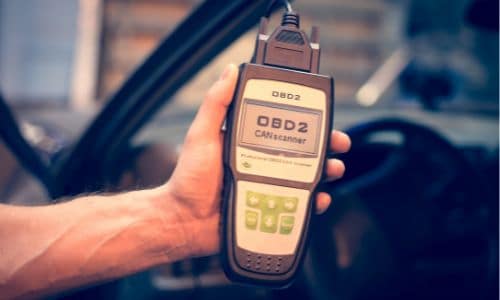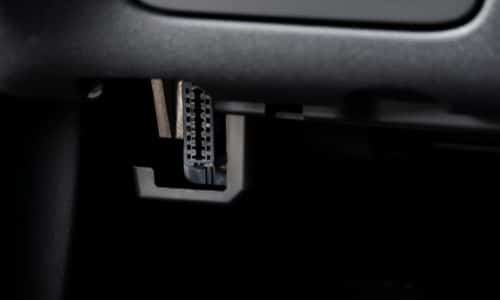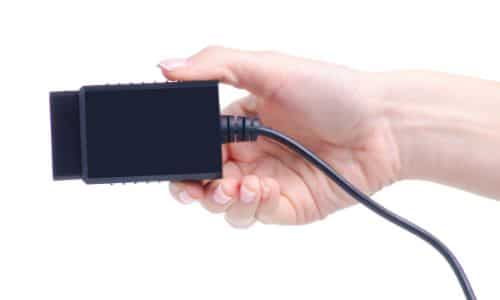You may have heard of the OBD or On-Board Diagnostics port on your car. Perhaps you’ve heard a technician refer to the port on your car as the OBD port, or OBD2 port. How do you know what type of OBD is on your car, and more importantly, how to read out the information on it yourself? In this article, we will explain everything about OBD, and what type of OBD is on your car.
What type of OBD is in my car? There are two standards, the initial OBD1 standard, and the newer and more commonplace OBD2 standard. OBD1 isn’t as easy to read as OBD2, and is far less widespread, mainly on older cars. You can either take your car to a workshop to read data via the OBD or OBD2 interface, or do it yourself from home, work, or anywhere on the road with a consumer-grade diagnostics solution. Out of the hundreds of devices and mobile apps out there, we’d recommend Carly.
GAIN MORE CONTROL OF YOUR CAR WITH THE CARLY FEATURES
Check the exact pricing of Carly for your car brand!

Fast International Shipping with DHL

14 days adaptor return policy

Excellent customer support

Lifetime warranty in the hardware
SEEN IN
Why Did OBD Come About?

In the Seventies, America was becoming increasingly aware and concerned about the effects of vehicle emissions on the health and well-being of the populace. Vehicle emissions from internal combustion engines contain harmful substances in a gaseous form such as sulfur and nitrogen oxides, carbon dioxide, carbon monoxide, and microscopic solid particles, known as particulate matter. States began to become increasingly concerned about this, and Clean Air regulations started to be enacted.
California was at the forefront, and a mandatory requirement soon emerged for vehicles to contain in-built systems that continuously monitor emissions control equipment in real-time, and indicate any faults to the driver via a fault lamp. The car could then be taken to a workshop where the faults from the emissions control system can be read. This is done via the OBD port, and the type of OBD became the OBD1 standard.
Why Was OBD1 Problematic?
OBD1 was problematic because it was a very loose standard and protocol in terms of unification. Automakers began to implement their own proprietary ports and protocols under OBD1, which meant that workshops often had to stock multiple OBD1 readers if they handled multiple brands of vehicles. Of course, this was the 80s and 90s, and consumer-grade OBD devices were not in existence, since OBD1 readers were hugely expensive, often costing thousands of dollars.
Another reason why OBD1 was considered inadequate is that vehicles began to become more technologically advanced, with an increased prevalence of computerized systems for not only emissions control, but drivetrain management, brake system management, safety systems, and conveniences such as HVAC and infotainment. The first type of OBD was not designed to cater to these. All these shortcomings led to the introduction of a new type of OBD, known as the OBD2 protocol and interface.
What Is OBD2?
OBD2 is the current type of OBD and the most significant iteration of the diagnostics standard, as it is still in existence in 2022, having been introduced in 1996. One of the most critical faults of OBD1 that OBD2 corrected was the unification of the port required to communicate with a vehicle’s systems. The OBD2 port is a standard female 16-pin J1962 connector. Automakers began to adopt this port, and by 2005, basically, any new vehicle sold by a major automaker since then is equipped with an OBD2 port.
OBD2 also allowed the definition of standard functions, as well as manufacturer-specific functions. Standard functions cover critical systems in a vehicle, while manufacturer-specific functions are provided for manufacturers to customize on their vehicles, to allow for communication with their own systems. This has worked extremely well, which is one of the major reasons why OBD2 remains prevalent in 2022. Of course, OBD2’s shortcomings are manifesting in the era of hybrid and electric vehicles, and the OBD3 standard is in development to address these.
As with OBD1, a fault in the vehicle’s systems is indicated by the illumination of a fault or ‘check engine’ light within the instrument cluster, and some vehicles may provide an error message on the multi-information display, or infotainment screen if so equipped.
How Can the OBD2 Data on My Vehicle Be Read Out?

The simplest way to read out the OBD2 data from your vehicle used to be to drive to a workshop and have them conduct a diagnostic scan. Workshops are well equipped to read out the OBD2 data from almost all vehicles, and a diagnostic scan can take between 15 and 30 minutes, albeit at a cost of between $30 and $80, depending on workshop, type of OBD, and depth of scan.
However, there are two other costs that are not immediately apparent until you embark on this avenue. The first is, your time cost. You need to drive to a workshop, spend time there, possibly make an appointment or wait for a technician to be available, and drive back after the scan. The other cost is of course, the fuel cost, and in an era of all-time-high gas prices, people are forced to be vigilant of their mileage as a result.
Can I Do It Myself?
There are consumer-grade solutions available for owners and drivers to read out the data from their vehicles, simply by plugging the requisite cable or adapter into the OBD2 port on their car. There are three types of solutions available on the market.
The first solution is to purchase a dedicated OBD2 scanner that is essentially a smaller version of what workshops use. The prices of such devices have come down exponentially, and it is possible to pick up one for as little as $50.
However, cheaper devices do have pitfalls, in that they may have small screens, present error codes in raw format that require further deciphering via an internet search, and the most significant pitfall is that most of them cannot be updated. This means that you are stuck with the in-built software on the device for its lifetime, and if you buy a new car down the line, the device may not offer adequate functionality.
There are devices that offer larger screens, comprehensive error detection and deciphering, and updating via USB, but these can run upwards of $150, and head towards $500 very quickly.

The second solution is to install dedicated software on a laptop, and use a USB to OBD2 adapter cable. This avenue offers powerful software with great features and updates, but can also run you around $100. The most significant pitfall is that you need to take your laptop with you whenever a diagnostic scan is required.
The third avenue is the most versatile. A small dongle connects to your vehicle’s OBD2 port and wirelessly communicates with an app installed on your smartphone. This can be obtained cheaply, for around $50, but it’s best to go for a renowned and trusted solution such as Carly.
Tell Me about Carly
Carly is a holistically developed solution consisting of the Carly Universal OBD Scanner that plugs into your vehicle’s OBD2 port and wirelessly communicates with the Carly app on your smartphone. Carly costs under $100 for the hardware and software, and you can install the free Carly lite app to find out what’s supported on your vehicle before making a purchase.
Carly offers powerful diagnostic scanning capabilities with comprehensive and easy-to-understand data presentation, as well as added features such as maintenance minder management, coding, real-time monitoring of parameters and the Carly Used Car Check to help detect mileage tampering on a used car that you are interested in purchasing. Choose Carly and you’ll enjoy peace of mind with regular updates issued as well.

